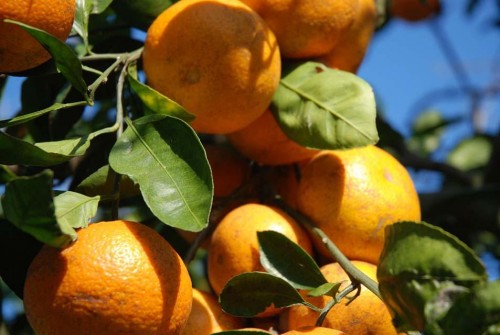
Lois Dufrene
January 7, 2008
A GOOD CALL: Alcorn satisfied about choosing life in stripes
January 9, 2008As the citrus harvesting season comes to an end in Terrebonne, Lafourche and St. Mary parishes, the LSU AgCenter is saying the quality of this year’s local crop of satsumas and navel oranges was excellent and the quantity of the fruit was above average.
Although the season for satsumas ended around Christmas, navel oranges will be available through mid-January.
The citrus industry as a whole in Louisiana was reeling last year, recovering from the effects of the 2005 hurricanes.
The decrease in supply caused citrus prices to rise last harvest season, said Dr. Bobby Fletcher, LSU AgCenter horticulture agent for Lafourche and Terrebonne parishes.
But prices are lower this season because more fruit is being harvested in Katrina-ravaged Plaquemines Parish, by far the largest producer of citrus in the state, Fletcher said.
Around 50 percent of the citrus trees in Plaquemines were destroyed by Katrina.
Citrus growers in lower Lafourche and Terrebonne parishes were affected by Hurricane Rita in 2005, but the damage was minimal.
Fletcher also said that citrus growers in the Tri-parishes are cooperating with one another more effectively than in the past.
“Growers have worked together to market their products,” he said. “They’ve helped each other ship and harvest. It has made them more successful as a group.”
“Proper marketing of this perishable crop is always an issue,” he stated in a news release. “Satsumas do not travel well and must be sold primarily in the local market.”
Local citrus farmers have also benefited from a lack of freezes. The area has not experienced a crop-destroying freeze since 1989.
The temperature hit 25 degrees Fahrenheit on Jan. 2, but only the outer canopies of citrus trees saw any damage, Fletcher said.
Fortunately, the trees had experienced some frost over the past four-to-six weeks, acclimating them to the freezing temperature, he said. Otherwise, damage would have been greater.
Of course, if the temperature reaches 18 degrees, all trees will be lost, he said.
(For homeowners with citrus trees, the AgCenter recommends keeping the ground under the canopy bare. Heat can transfer more easily into the canopy that way. The AgCenter also says that bare citrus trees fare better in cold weather than those holding fruit.)
Fletcher cited hurricanes and untimely freezes as the two factors constraining the Louisiana citrus industry.
“Citrus is low-maintenance, unlike peaches and plums,” he said. “Commercial growers can almost make a living off it, minus those two factors. Our problem is we’re limited to December and January.”
More than half the production in Louisiana is satsumas. Most of the remainder is Washington navel oranges, followed by kumquats, lemons and grapefruit.
The Tri-parishes have 175 acres producing citrus, up from 150 acres before Katrina.
Because of the hurricane, Plaquemines Parish lost more than half its 1,000 acres devoted to citrus trees.
Citrus production in Louisiana was worth $3.5 million in 2006. Before Katrina, the worth was $6.3 million, with Lafourche Parish producing $710,000 and Terrebonne $213,000.
Along with Plaquemines, the areas make up the only significant commercial citrus-producing parts of the state, but their output is minimal compared to the huge amount of fruit produced in California and Florida.
“Our market is a drop in the bucket compared to them,” Fletcher said. “Fruit from California and Florida looks good, but because of our alluvial soil, the flavor is so much better. You can’t compare the flavor of the two.”
“Our fruit is not used for juice,” he said. “We sell for the fresh market.”
Fletcher said prices at roadside stands are lower than at farmers’ markets and at retail outlets, but growers do not benefit as much from sales at roadside stands.
Satsuma tangerines were in great supply through the Christmas holiday. Navel oranges will be in good supply in the Tri-parishes through mid-January. * Photo courtesy of LSU AgCenter










